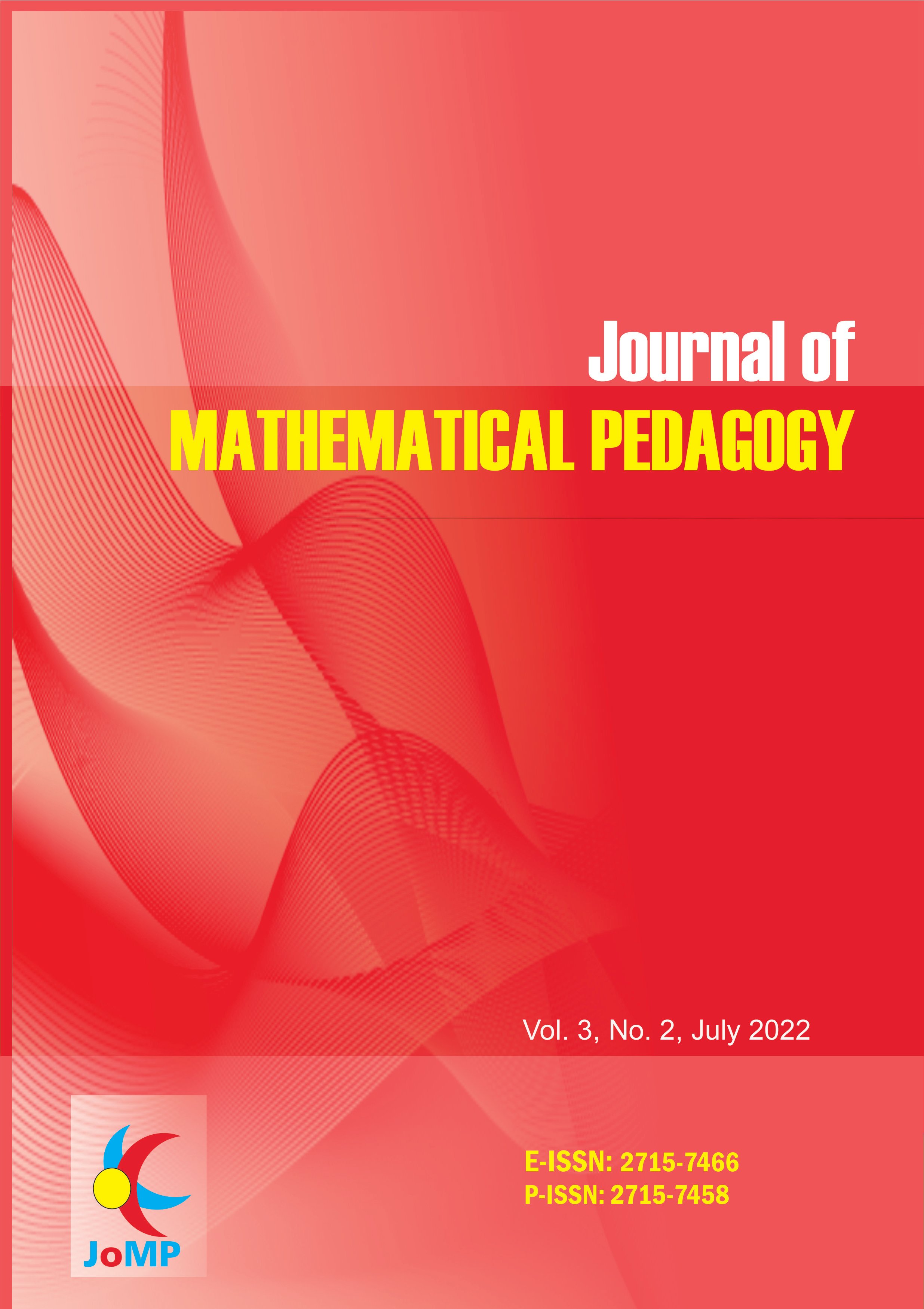How does Math Anxiety affect Students’ Problem Solving Ability? A case of Ill Structured Problem Mathematics Problem
DOI:
https://doi.org/10.26740/jomp.v3n2.p98-113Keywords:
Problem solving, Ill structured problem, math anxietyAbstract
The process of learning mathematics for some students can cause anxiety. The anxiety experienced by students can interfere with the mathematics learning process, especially in students' ability to solve mathematical problems. This study is qualitative descriptive research that aims to analyze problem-solving abilities in terms of mathematical anxiety. Researchers tested the ability to solve problems ill-structured on six grade VIII students of SMPN 1 Kemlagi in Mojokerto. The six students consisted of two students with high math anxiety, two students with moderate math anxiety, and two students with low math anxiety. The results of data analysis showed ill-structured problem-solving abilities (1) students with low and moderate anxiety levels were able to reach the stage of understanding problems, making plans, and re-examining very well; (2) students with low levels of mathematical anxiety have reached the stage of executing the plan very well, while students with moderate levels of mathematical anxiety have not reached this stage because there are still errors in making calculations; (3) students with high levels of math anxiety have not been able to reach all stages of problem-solving. This study suggests that teachers pay more attention that math anxiety as one of the factors that must be considered in mathematics learning
References
Ardani, E. R. (2021). Analisis Kecemasan Terhadap Kemampuan Pemecahan Masalah Matematika Pada Materi Aritmatika Sosial. EDUTAMA, 1(1), 1-7.
Ismawati, N., Masrukan, M., & Junaedi, I. (2015). Strategi dan proses berpikir dalam menyelesaikan soal pemecahan masalah berdasarkan tingkat kecemasan matematika. Unnes Journal of Mathematics Education Research, 4(2).
Pattisina, Z. C., & Sopiany, H. N. (2021). Kemampuan Pemecahan Masalah Matematis Siswa Ditinjau Dari Kecemasan Matematis pada Materi Lingkaran. Sesiomadika.
Rizki, F., Rafianti, I., & Marethi, I. (2019). Pengaruh Kecemasan Matematika terhadap Kemampuan Pemecahan Masalah Siswa di SMA. GAUSS: Jurnal Pendidikan Matematika, 2(2), 11. https://doi.org/10.30656/gauss.v2i2.1750
Siswono, T. Y. E., Kohar, A. W., Hartono, S., Rosyidi, A. H., Kurniasari, I., & Karim, K. (2019). Examining teacher mathematics-related beliefs and problem-solving knowledge for teaching: Evidence from Indonesian primary and secondary teachers. International Electronic Journal of Elementary Education, 11(5), 493-506.
 Abstract views: 622
,
Abstract views: 622
, PDF Downloads: 865
PDF Downloads: 865





